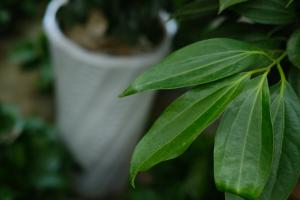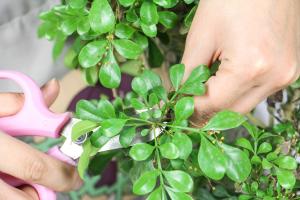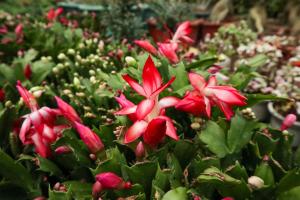How to Take Care of a Potted Mint Plant
Mint is a wonderful herb to have in any household as it can be used in various recipes, teas and even as a natural remedy for certain ailments. Growing a mint plant in a pot is a convenient way to have it easily accessible in your home. However, it is important to take good care of your mint plant for it to thrive. Here are some tips on how to take care of a potted mint plant.
Location
The location of your potted mint plant is crucial to its growth. Mint plants require adequate sunlight, so it is important to place the pot in a spot that receives a minimum of six hours of direct sunlight daily. If you live in a hot climate or have a south-facing window, you may need to provide some shade to prevent the mint plant from getting scorched.
Soil and Watering
Mint plants need well-draining soil to prevent water from pooling around the roots. When planting, make sure to use a potting mix specifically formulated for herbs. Watering is another crucial factor in maintaining the health of your mint plant. Mint plants require moist soil, but not soggy soil. Water the plant when the top inch of soil feels dry to the touch, but do not overwater. Ensure that the pot has drainage holes to allow excess water to escape.
Fertilizer
Mint plants are heavy feeders and require regular fertilizing to maintain their vigor. Fertilize the plant once every two weeks using a balanced liquid fertilizer. Make sure that the fertilizer is diluted to half strength to avoid burning the plant's roots. Avoid using fertilizers that are high in nitrogen, as this can result in too much leafy growth and less flavor in the leaves.
Pruning
Pruning your mint plant is essential to maintain its growth and flavor. Regular pruning allows the plant to produce new growth and prevents it from becoming overcrowded. When pruning, make sure to remove any dead leaves, stems or flowers. Pinch off the tips of the stems and remove any stem that is producing flowers to encourage the plant to produce more foliage.
Pest Control
Mint plants are susceptible to various pests, including spider mites, aphids, and whiteflies. Regularly check your plant for any signs of infestation, such as yellowing leaves or webbing. If you notice any pests, use an insecticidal soap or spray to control the pests. Alternatively, you can use neem oil, a natural pesticide that is safe for plants and pets.
In conclusion
With the right care and attention, a potted mint plant can thrive and provide you with fresh mint leaves for culinary and medicinal purposes. Keep in mind the plant's location, soil and watering, fertilizer, pruning, and pest control, and you'll be sure to enjoy a healthy and productive mint plant.

 how many times do yo...
how many times do yo... how many planted tre...
how many planted tre... how many pine trees ...
how many pine trees ... how many pecan trees...
how many pecan trees... how many plants comp...
how many plants comp... how many plants can ...
how many plants can ... how many plants and ...
how many plants and ... how many pepper plan...
how many pepper plan...






























